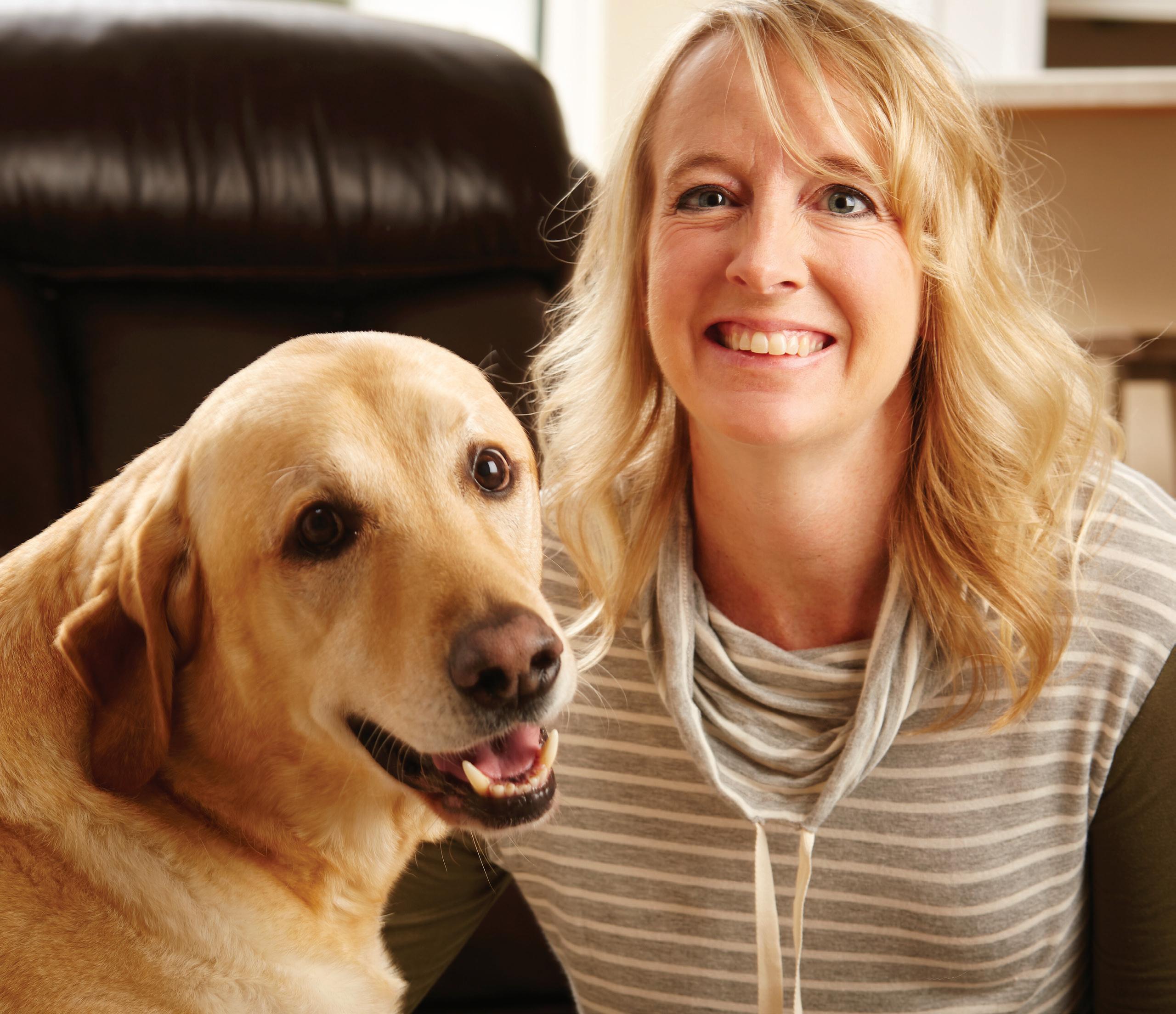
4 minute read
A Young Stroke Survivor’s Story A Cedar Rapids woman has a serious stroke at the age of 43
Monica enjoying some special “pet therapy” with Cooper in her Cedar Rapids home.
A young stroke survivor’s story
Advertisement
Monica Link was used to severe headaches. The 43-year-old Cedar Rapids woman experienced migraines for much of her life so when she developed one on Dec. 1, 2019, she rested and waited for it to subside. Her husband Jeff noted this one was different.
“This migraine seemed a lot worse than others Monica had previously,” Jeff recalls. “Usually by midday she’s starting to
feel a little better but this one went into the evening. It was around dinner time before she even felt like eating.”
“That evening I was opening a box of candy canes and my daughter noted I was having trouble with my left hand and said something about my face,” shares Monica. “I kept trying to open the box.”
“I was carrying something down to the basement when I heard that exchange and stopped right away and went over and asked Monica to look at me,” remembers Jeff. “Her face didn’t look quite normal to me.”
“I think I was leaning on the counter at that point and still struggling to open the box,” Monica says. “I tried to continue with the project as if nothing was wrong.”
“I gave her maybe another minute or so and she just seemed to be a little more disoriented and confused,” recalls Jeff. “I was pretty sure it was a stroke or something serious happening with Monica. I scooped her up, put her in the car and drove to the ER.”
MEDICAL EMERGENCY “I really don’t remember a whole lot after I got to St. Luke’s,” shares Monica. “I remember people talking to me and explaining what was happening, but none of it really registered with me. I was never really scared. I was just there. I wasn’t able to put it all together at the time.”
“When Monica arrived at St. Luke’s ER most of her left side was paralyzed,” shares Tony Carter, DO, St. Luke’s ER. “I could clearly see her left side was not working and she was neglecting it like she had forgotten she had a left side. That is one of the signs of a stroke.”
Tony Carter, DO
“Monica had a large stroke,” states Andrew Peterson, MD, Physicians’ Clinic of Iowa (PCI) neurologist. “The main artery on her right side was blocked. On her initial CT scan, we could see the clot sitting in the artery. Her stroke was very high on the stroke scale. There was no doubt what was going on with her and we were able to start treatment within 40 minutes of the onset of her symptoms, which is phenomenal for an out of hospital stroke. She received tissue plasminogen activator (tPA), which is a medicine that helps break down the clot.”
“Monica had a carotid dissection,” explains Dr. Carter. “It’s a tear in her carotid artery and that small irregularity starts the blood clotting cascade that blocked the blood flow in smaller branches of the artery. Blocked or decreased blood flow can lead to the stoppage of oxygen downstream causing stroke — like it did for Monica.” A carotid dissection tends to occur more often in younger adults and can happen as the result of a traumatic injury to the neck or spontaneously with no known cause.
TIME IS CRITICAL “Identifying someone having a stroke is critical,” stresses Dr. Carter. “Time is a major factor in treatment and outcome. Even if they had waited a little bit longer before coming to St. Luke’s it would have made a huge difference in Monica’s outcome. And if we hadn’t been able to address it as rapidly as we did – she may not have been able to move her left side again. It would have been horrible. Someone who is having a stroke may not be able to identify what is happening to them and that’s why it’s critical loved ones or friends get you to the ER or call 911 as soon as possible.”
“It’s so important to trust your family members because they know what you normally look like and can tell you when you’re not looking or acting normal,” Monica shares. “At my age, you would never think these kinds of things can happen to you but clearly they can and it’s out of your control.”
“Everyone at St. Luke’s was really on their game that day,” states Jeff. “Everyone we worked with – they are amazing people and they’re really good at their jobs and we are thankful.”
Monica continues her recovery with outpatient physical therapy and says, “Looking back at everything, I am beyond blessed and just so grateful that I was able to come home to my family. An experience like this has a way of putting what’s truly important in perspective.”
Act FAST to spot a stroke. Know the signs. Face. Does one side of the face droop? Arm. Is one arm weak or numb?
Speech. Is speech slurred? Time. If an individual has any of these symptoms, time is critical, call 911 and go to St. Luke’s ER immediately.








